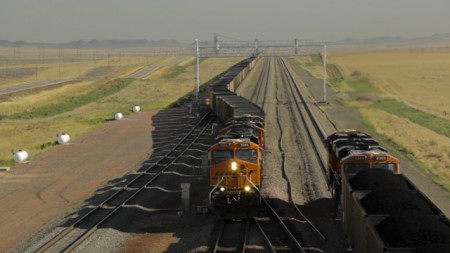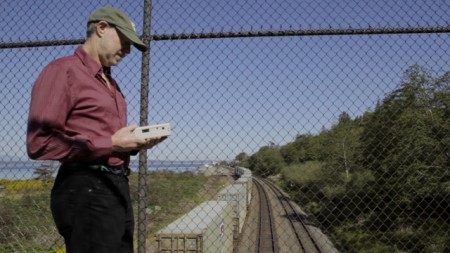
Courtesy KCTS 9 / Earthfix
In recent years crowdfunding -- raising money for a project from a number of small donors, usually online -- has become a popular way to raise capital for business start-ups and artistic endeavors. Now scientists are also turning to this method to help pay for critical research.
This year Dan Jaffe, a University of Washington professor of atmospheric sciences, is reaping the rewards of crowdfunding. He and his team are studying the air pollution emitted by passing coal trains. The money for the project came entirely from small online donors. “I was surprised how well this worked,” Jaffe said. “We’re never going to fund a new superconducting particle collider with this, but it definitely has a place.”
Jaffe’s study is specifically related to plans to build large coal-export terminals around the Pacific Northwest -- plans that have become a lightning rod for controversy because of potential public health risks. The facilities would ship coal from Wyoming’s Powder River Basin to lucrative markets in Asia. But to get the coal from Wyoming to export terminals in Washington and Oregon, the coal would have to be moved by open-topped rail cars. Between 18 and 37 coal trains a day would rumble across the West, passing through population centers like Seattle and Portland. The public has expressed concern about the clouds of coal dust and other pollutants that these coal trains might leave in their wake. But when Jaffe looked into it he found almost no research on the topic.

“It’s not my job to advocate a decision on this issue,” Jaffe said. “But I wanted to know if we have enough information about coal trains and the impact on air quality to make a decision on whether to permit these terminals. And we clearly do not.”
Jaffe took his concerns to state and national agencies and asked them to fund a study on how coal trains impact air quality. When they declined, he signed up for an account on microryza.com, a crowdfunding platform for scientists. The goal was to raise $18,000 for the research, and within a matter of days the project was fully funded. To date, more than $20,000 has been pledged by 271 small donors. “I didn’t even realize there was a crowdfunding platform for science until this came up,” said Alexis Bonogofsky, a Montana-based conservationist who contributed to the project via Microryza. “I feel like this democratizes science and it allows scientists to respond very quickly to questions we need to know now.”
